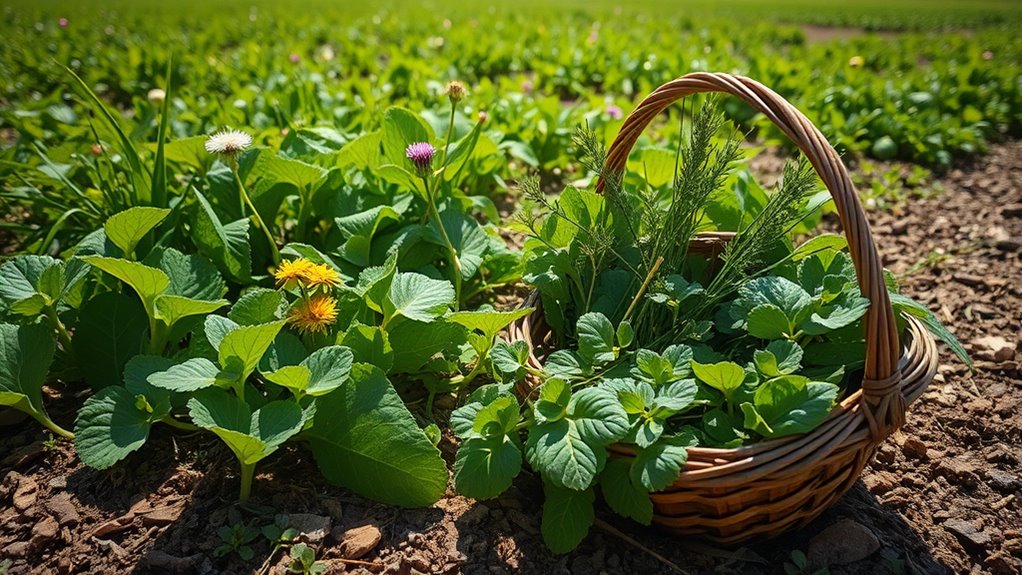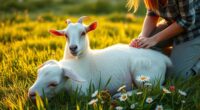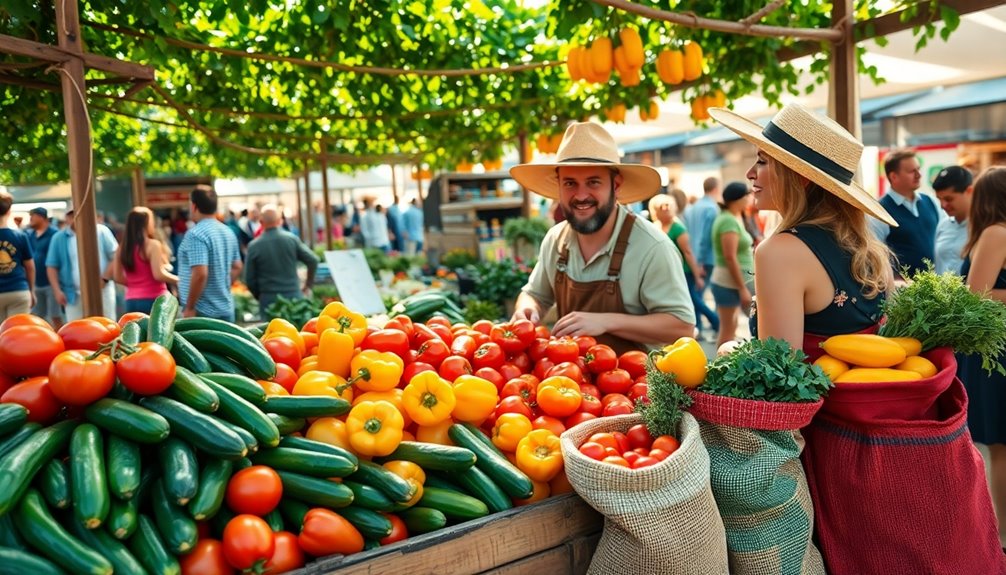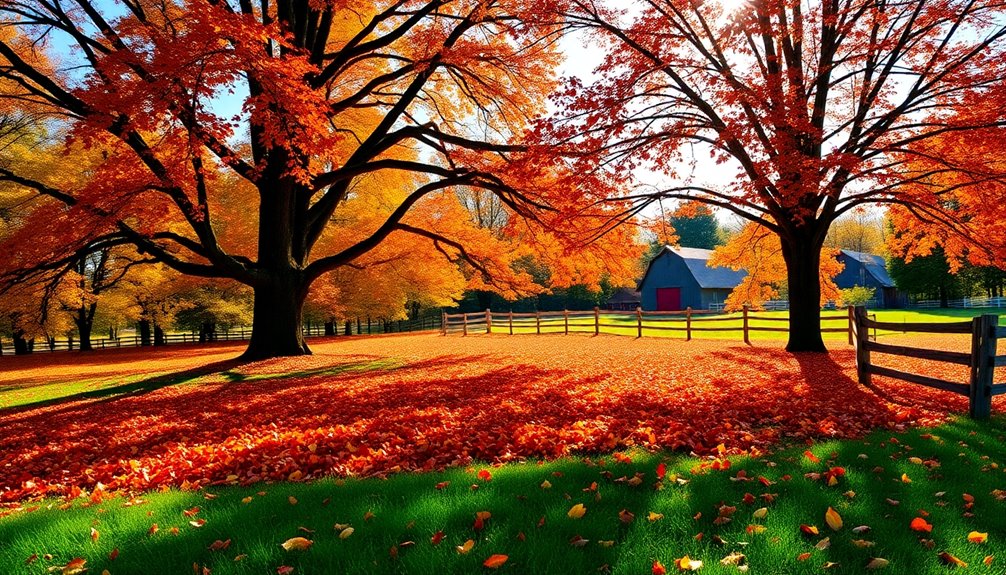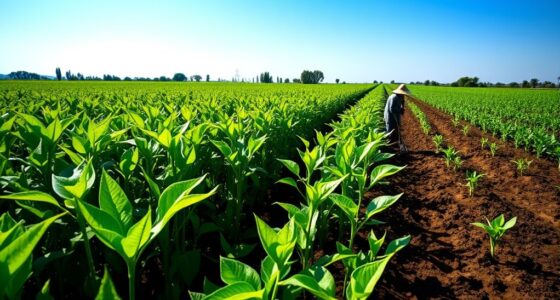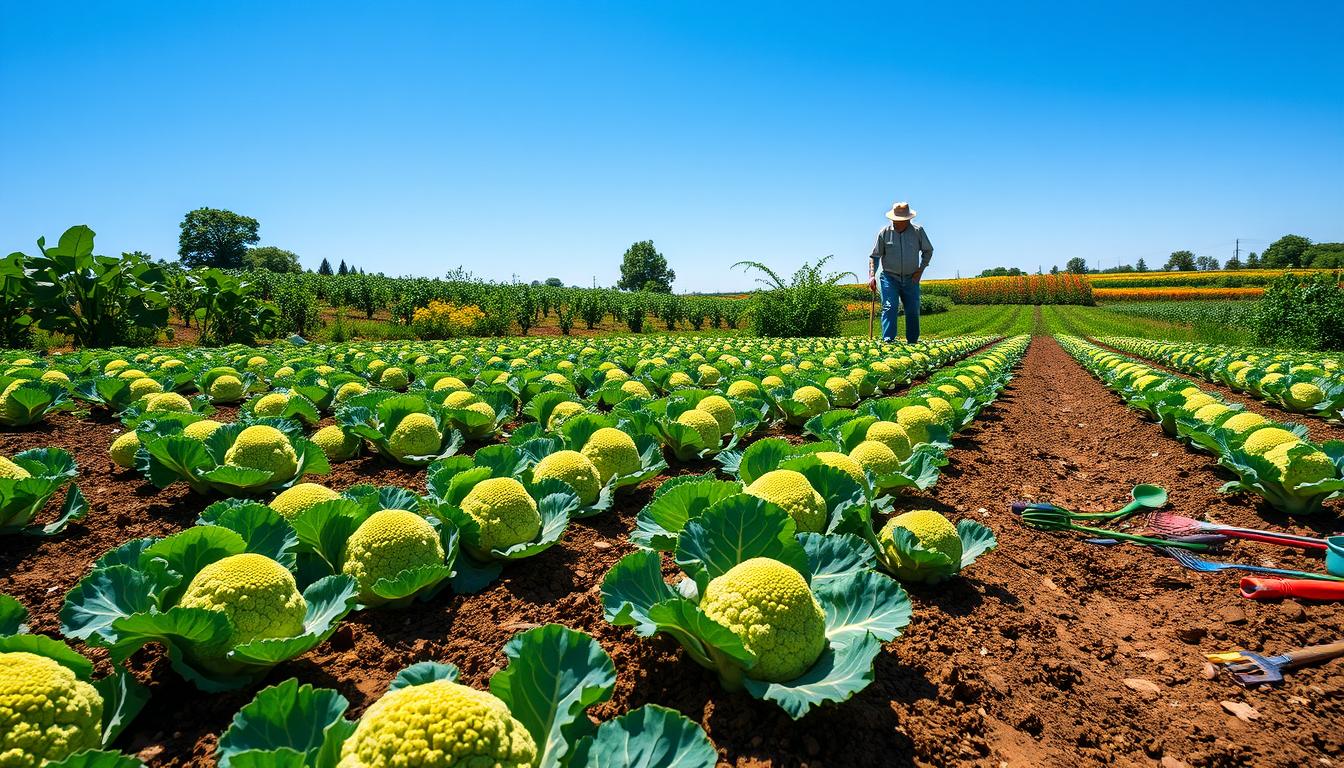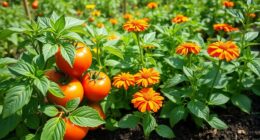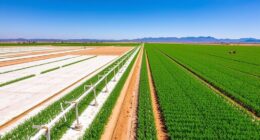Foraging on your farm can be a rewarding experience, offering a variety of delicious and nutritious wild plants. Start by looking for dandelion greens, which are great in salads, and stinging nettle, perfect for soups. Pay attention to wild ramps for their unique flavor and cattail shoots for a low-calorie addition. It's crucial to know which plants to avoid and how to harvest sustainably. Keep going to discover more tips on safe and successful foraging!
Key Takeaways
- Familiarize yourself with common edible wild plants on your farm, such as dandelions, nettles, and wild ramps.
- Utilize a reliable field guide to accurately identify and differentiate between edible and toxic plants.
- Harvest sustainably by taking only what you need and leaving flowers and seeds for regeneration.
- Incorporate foraged greens into meals for added nutritional value and diverse flavors.
- Practice safe foraging by avoiding areas near roads and familiarizing yourself with local poisonous plants.
Understanding the Benefits of Foraging
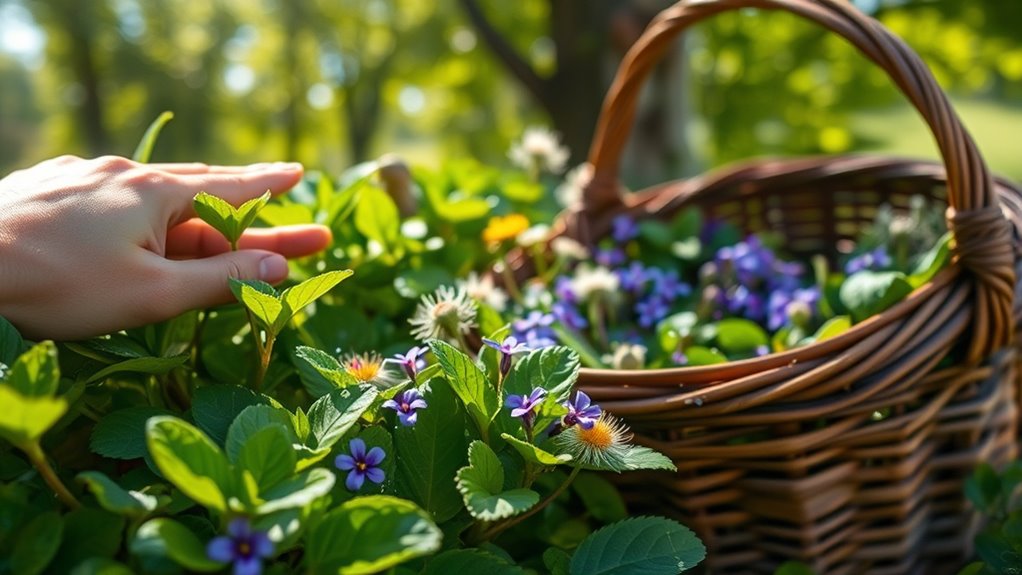
Foraging for edible wild plants not only offers a way to save money on groceries, but it also enriches your meals with diverse flavors and nutrients.
By incorporating wild greens like dandelions and nettles, you boost the nutritional quality of your diet, as these plants often contain more vitamins and minerals than their cultivated counterparts.
Engaging in sustainable foraging practices guarantees you take only what you need, preserving wild plant populations and supporting local biodiversity.
Plus, foraging fosters a deeper connection with the land, enhancing your awareness of local ecosystems.
You'll likely find a sense of community among fellow foragers enthusiastic to share their knowledge, creating opportunities to learn and grow together while exploring nature's bounty. Additionally, understanding proper identification of wild edibles helps prevent the consumption of toxic plants, ensuring a safe foraging experience.
Safety Tips for Foraging Wild Plants
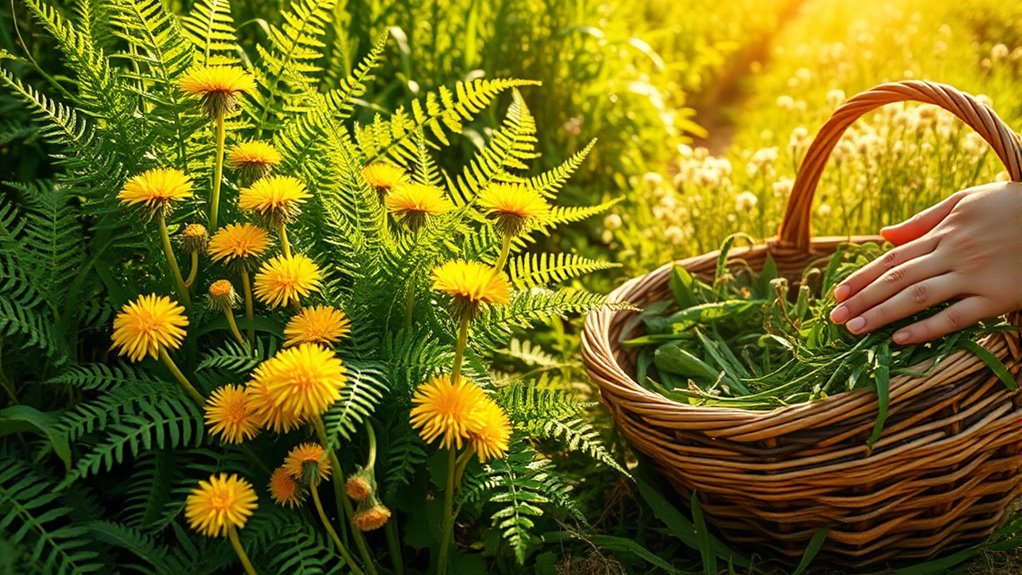
When venturing into the wild to gather edible plants, it is vital to prioritize safety to avoid harmful mistakes. Start by using a reliable identification manual and consult local experts for accurate plant identification. Always harvest wild edible plants at least 30 feet away from roadways and polluted areas to minimize contamination. When trying new food sources, begin with small quantities to gauge your body's reaction. Observe plants throughout different seasons to distinguish between common edible and medicinal species and their poisonous counterparts. Don't forget to seek permission for foraging on private land, and stay informed about local regulations.
| Safety Tip | Importance | Action Item |
|---|---|---|
| Accurate Plant Identification | Prevents toxic consumption | Use a reliable manual |
| Harvest Location | Reduces contamination risk | Stay 30 feet away |
| Start Small | Avoid allergic reactions | Try small quantities |
| Seasonal Observation | Confirms plant characteristics | Observe through seasons |
Essential Tools for Effective Foraging
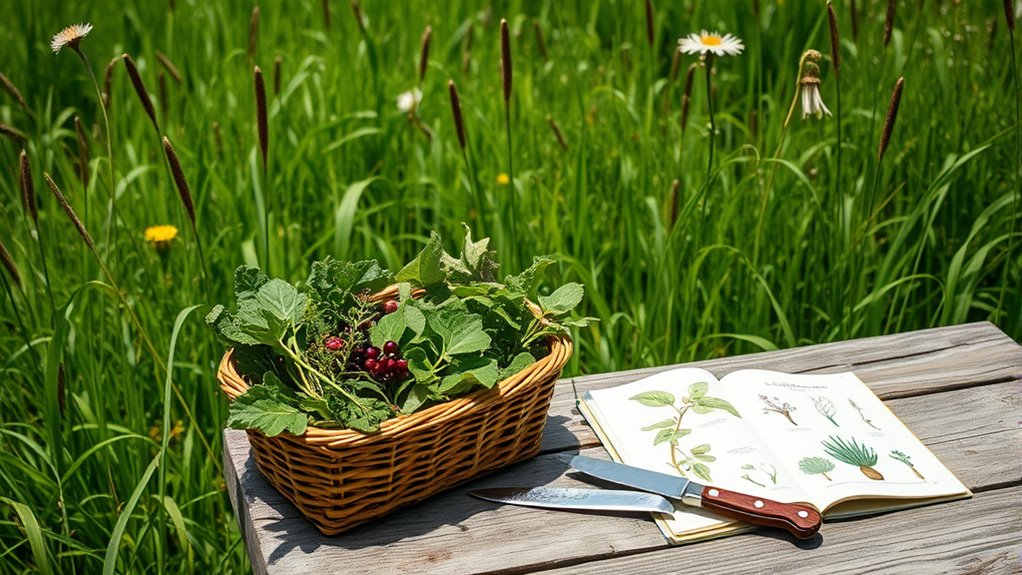
To forage effectively, you need the right tools and safety gear to enhance your experience.
A checklist of essential items, from a reliable field guide to gloves for protection, is vital for a successful outing.
Understanding harvesting techniques will empower you to gather wild plants safely and efficiently.
Foraging Tools Checklist
A successful foraging trip hinges on having the right tools at your side.
Start with a reliable field guide that features images and descriptions of local edible plants, ensuring you can identify them correctly and avoid mistakes.
A sturdy digging stick is essential for harvesting roots and tubers, especially in rocky soil. Pair it with a trowel for digging deeper root systems with ease.
Carry scissors or shears to cut greens and herbs cleanly, promoting sustainable harvesting practices.
Finally, don't forget plastic bags or cloth sacks for collecting and transporting your foraged items, allowing for easy organization.
Additionally, understanding Leave No Trace principles is crucial to minimize your impact on the environment while foraging.
With these foraging tools, you're well-equipped to enjoy nature's bounty while being responsible.
Happy foraging!
Safety Gear Essentials
Safety gear is essential for a successful foraging experience. To keep yourself safe and efficient while foraging, make certain you pack the following:
- Gloves: Protect your hands from irritants, especially when harvesting plants like stinging nettles.
- First Aid Kit: Carry a small kit for minor injuries or allergic reactions you might encounter.
- Harvesting Tools: Use sturdy, lightweight tools like a trowel to dig roots without harming the plants.
These essentials not only enhance your safety but also guarantee that you enjoy the foraging adventure.
With the right safety gear, you can focus on identifying and collecting edible plants while minimizing risks.
Happy foraging!
Harvesting Techniques Overview
Packing the right gear lays the groundwork for effective foraging, but mastering the techniques for harvesting wild plants is just as important.
For roots and tubers, a digging stick—especially one with a fire-hardened point—helps break through rocky soil. When you're cutting herbs, use scissors or shears to make clean cuts, which encourages regrowth and keeps plants healthy.
A trowel is invaluable for carefully excavating edible tubers or bulbs, ensuring you don't harm surrounding plants. To transport your foraged items, opt for plastic bags or baskets that allow airflow to prevent spoilage.
Finally, always carry a reliable field guide for proper identification of edible plants, ensuring your foraging experience is both safe and rewarding.
Common Edible Wild Plants to Look For
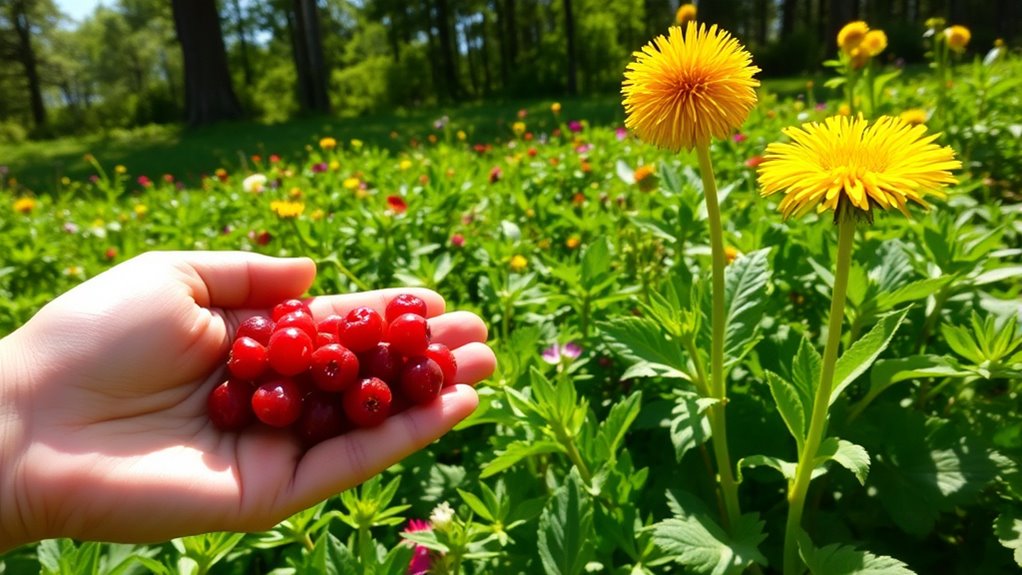
Exploring your farm for common edible wild plants can be a rewarding experience, offering both culinary delights and a deeper connection to nature.
Here are some plants you should look for:
- Dandelion: Young leaves are great in salads, and the roots can be dried for tea or coffee.
- Stinging nettle: Packed with vitamins A, C, K, and iron, cook them to neutralize their sting for delicious soups or sautéed dishes.
- Cattails: Their young shoots and flower heads can be eaten raw or cooked, tasting like a mix of cucumber and unsweetened watermelon.
Keep an eye out for wild ramps too—these spring delicacies have a strong garlic-onion flavor.
Enjoy discovering these treasures on your farm!
Harvesting Techniques for Wild Edibles
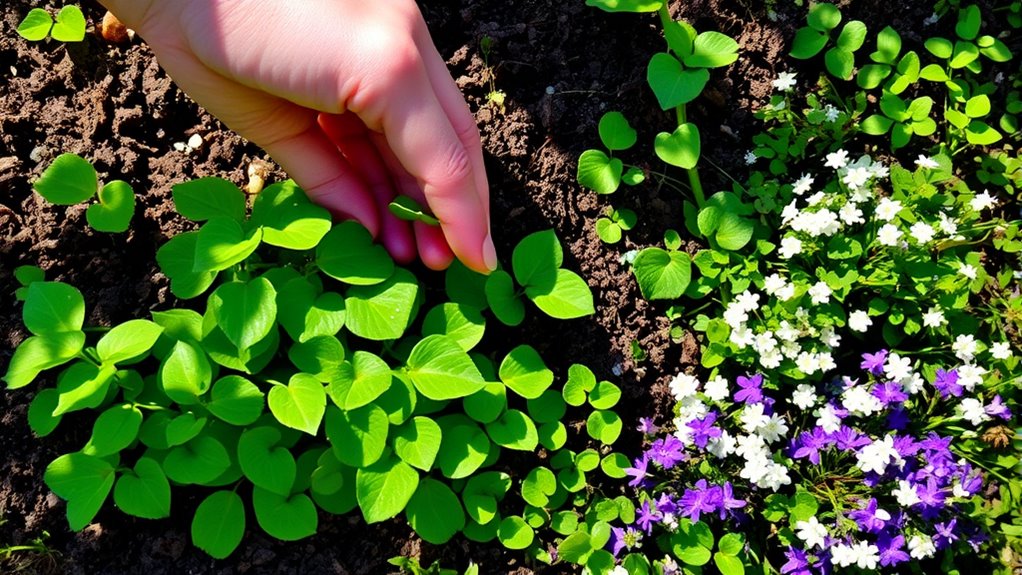
When it comes to harvesting wild edibles, having the right tools makes all the difference.
You'll want to practice ethical techniques, ensuring you leave enough for the plants to thrive while also picking at the right time for ideal flavor and yield.
Let's explore the best tools and practices to make your foraging successful and sustainable.
Tools for Harvesting Edibles
To successfully harvest wild edibles, you'll want to equip yourself with the right tools that make the process efficient and sustainable.
Here are some essential tools for harvesting edibles:
- A sharp knife or scissors for clean cuts of edible plants, minimizing damage and promoting regrowth.
- A digging stick with a fire-hardened point to effectively harvest roots and tubers, especially in rocky soil.
- A cloth bag or basket for greens to prevent bruising while allowing air circulation, keeping your harvest fresh.
Remember to handle your harvested plants properly by washing them thoroughly to remove any dirt or contaminants before consumption. Additionally, understanding the seasonal availability of wild edibles can enhance your foraging success.
With the right tools, foraging becomes a rewarding and enjoyable experience!
Ethical Harvesting Practices
After gathering the right tools for harvesting, it's important to adopt ethical practices that guarantee the sustainability of wild edibles. Only take what you need, leaving enough wild plants for regeneration and other foragers. This maintains that these free foods remain available for the future.
Always harvest at least 30 feet away from roads or contaminated areas to minimize pollutant exposure. Use digging sticks for roots and tubers, and replant root crowns to promote healthy regrowth.
Be mindful of the timing of your harvest; young leaves and flowers are often the most tender and nutritious.
Finally, familiarize yourself with local regulations to ensure you're foraging responsibly on both public and private lands.
Timing and Techniques
Understanding the right timing and techniques for harvesting wild edibles is essential for both your success and the health of the ecosystem. When foraging, follow these guidelines to guarantee sustainability:
- Use a fire-hardened digging stick to harvest roots and tubers, protecting the surrounding plants.
- For seed collection, shake seed heads into a sack or use a willow hoop to minimize waste.
- Always gather from pollution-free areas and avoid overharvesting to maintain plant populations.
Focus on young leaves of plants like common plantains and chickweeds for nutritious wild food.
Remember to harvest with care and respect, taking only what you need and leaving enough for the plants' reproduction. This approach supports both your needs and the ecosystem's health.
Sustainable Foraging Practices
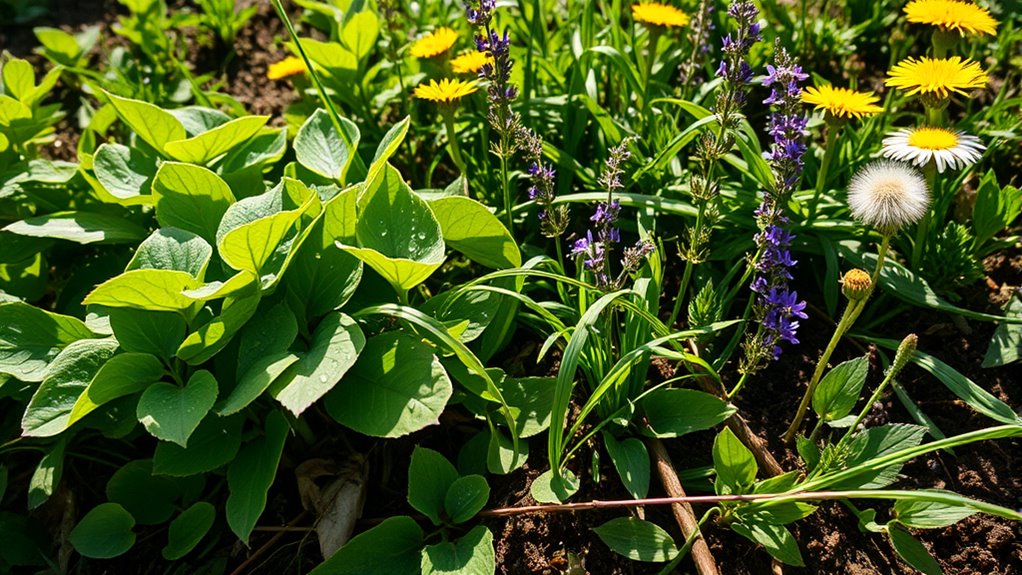
While foraging can be a rewarding way to connect with nature, it's crucial to practice sustainability to protect wild plant populations. To guarantee you're following sustainable foraging practices, consider these key points:
| Practice | Description | Importance |
|---|---|---|
| Take only what you need | Harvest just enough for your needs, leaving plenty behind. | Supports plant regeneration. |
| Leave flowers & seeds | Allow plants to reproduce by not picking all flowers. | Maintains ecological balance. |
| Harvest invasives | Ethical harvesting of invasive species helps local ecosystems. | Reduces their spread. |
| Follow local regulations | Engage with guidelines for responsible foraging. | Promotes stewardship. |
Identifying and Avoiding Toxic Plants
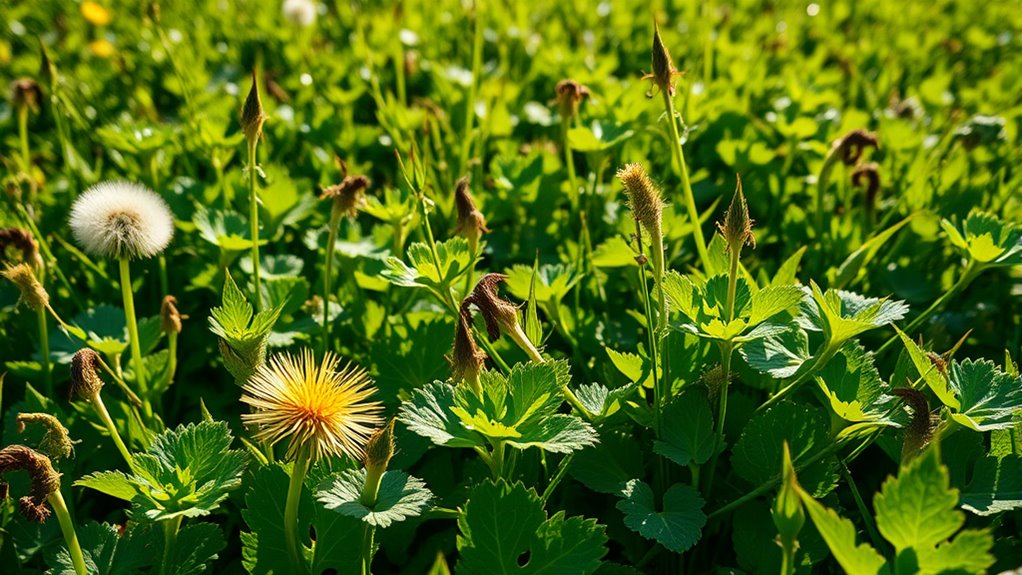
Sustainable foraging practices not only protect plant populations but also guarantee your safety by helping you identify potentially toxic species. Familiarize yourself with local poisonous plants through identification guides.
Here are some common toxic plants to watch out for:
- Hemlock: Highly poisonous and can be fatal if ingested.
- Poison Ivy: Causes severe skin reactions and discomfort.
- Foxglove: Contains compounds that can affect the heart.
Always observe plants in various growth stages and seasons to distinguish them from edible look-alikes.
Maintain at least a 30-foot distance from roads to avoid contamination. If you're ever uncertain about a plant's edibility, reach out to local experts or foraging groups.
Being cautious and informed will keep your foraging journeys safe and enjoyable.
Cooking With Foraged Ingredients
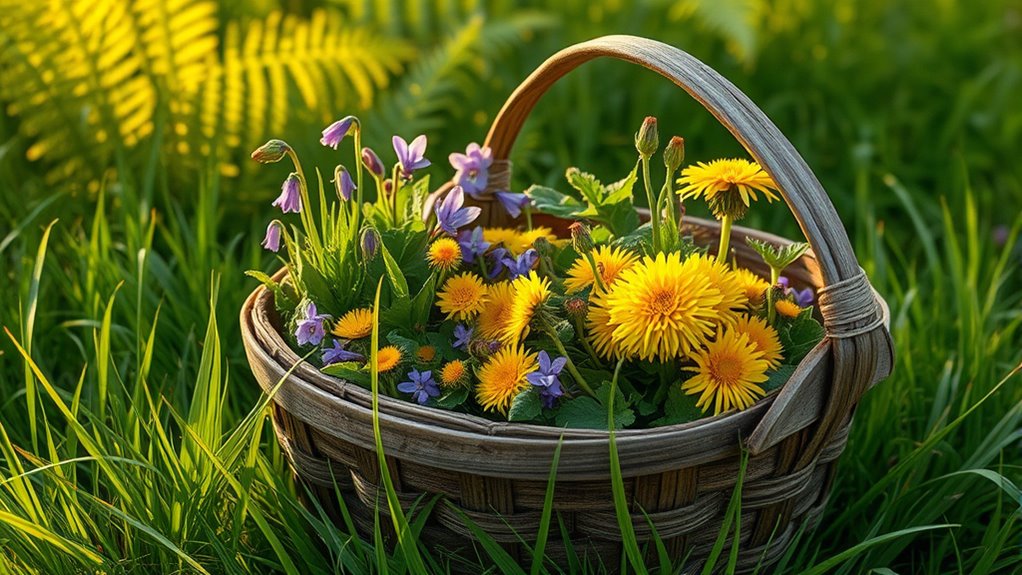
Cooking with foraged ingredients opens up a world of flavors and nutrition that can elevate your meals. By incorporating foraging edibles like wild greens into your dishes, you can enhance both the taste and health benefits.
Here's a quick guide to some delicious options:
| Ingredient | Uses | Nutritional Benefits |
|---|---|---|
| Stinging Nettles | Soups, pesto | Rich in vitamins A, C, K, iron |
| Wild Ramps | Pesto, sautés | Strong garlic-onion flavor |
| Cattail Shoots | Cooked like corn | Invigorating taste, low-calorie |
Try blending stinging nettles into a Nepali Nettle Soup or mixing wild greens into salads for a nutritious boost. Additionally, foraging can be a sustainable practice that connects you with nature and promotes biodiversity. Get creative and enjoy the unique flavors of nature's bounty!
Resources for Further Learning on Foraging
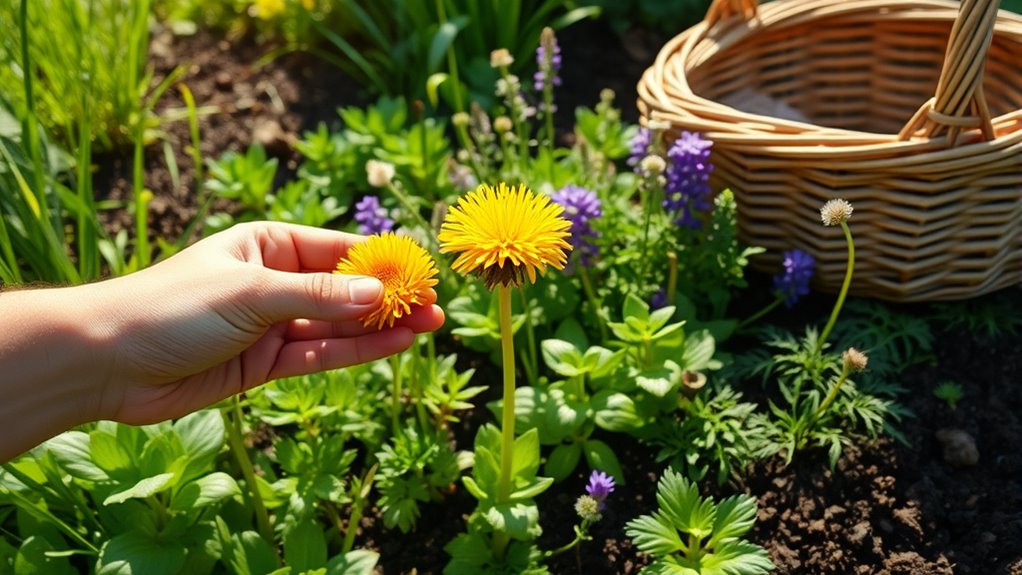
If you're keen to deepen your foraging knowledge, numerous resources can guide you on your journey.
Consider exploring the following options:
- Foraging courses: Take advantage of classes like those from Juliet Blankespoor's Chestnut School of Herbal Medicine, which cover safe harvesting and ethical guidelines.
- Reliable identification manuals: Use tools like iNaturalist to sharpen your plant recognition skills and guarantee safe foraging practices.
- Foraging groups: Join local communities or participate in guided walks to learn hands-on from experienced foragers.
Additionally, seek out recommended foraging guides, especially those by Sam Thayer, which focus on practical knowledge and sustainable harvesting methods.
Engaging with online foraging communities can also provide valuable insights and resources.
Happy foraging!
Frequently Asked Questions
How to Forage in the Wild and Identify Edible Plants?
To forage in the wild and identify edible plants, start by using a reliable identification manual or app like iNaturalist.
Familiarize yourself with local flora throughout the seasons to confirm their edibility. Always harvest from pollution-free areas, away from roads and industrial sites.
Begin with small quantities of new plants to monitor for allergies.
Finally, seek expert training or attend local workshops for hands-on experience in identifying and harvesting safe, edible plants.
What Are the 9 Rules to Follow When Finding Edible Plants?
When you're finding edible plants, remember these nine rules:
Always confirm plant identities with a reliable guide.
Harvest away from pollutants—at least 30 feet from roads.
Only collect small amounts when trying new plants to watch for reactions.
Practice ethical foraging by taking what you need and leaving enough for sustainability.
Know local foraging laws and ascertain you have permission on private lands to avoid legal issues.
Stay safe and enjoy your foraging!
What Is the Golden Rule of Foraging?
When you're out foraging, remember this golden rule: "Take only what you need; leave the rest to grow."
Think of it as a dance with nature, where you're both partners. By taking just enough, you help wild plants thrive for future explorers like yourself.
Respecting their ecosystem guarantees a sustainable harvest. Always consider the impact of your actions, and don't forget to seek permission when foraging on private land.
Happy foraging!
How Do You Know a Wild Plant Is Safe to Eat?
To know if a wild plant is safe to eat, always start by using a reliable identification manual or app.
Check for look-alikes that might be toxic. Avoid harvesting from polluted areas, as plants can absorb harmful chemicals.
Introduce any new plant slowly, monitoring for allergic reactions. Familiarize yourself with local poisonous species and consider seeking guidance from experts or taking foraging courses to sharpen your identification skills and guarantee sustainable practices.
Conclusion
As you venture into the world of foraging, remember that every wild plant tells a story, much like the pages of a classic novel waiting to be discovered. Embrace the thrill of finding nature's hidden treasures, but tread carefully, respecting the balance of your farm's ecosystem. With knowledge and care, you'll not only enrich your meals but also deepen your connection to the land, just as ancient foragers did in their timeless pursuit of sustenance.

